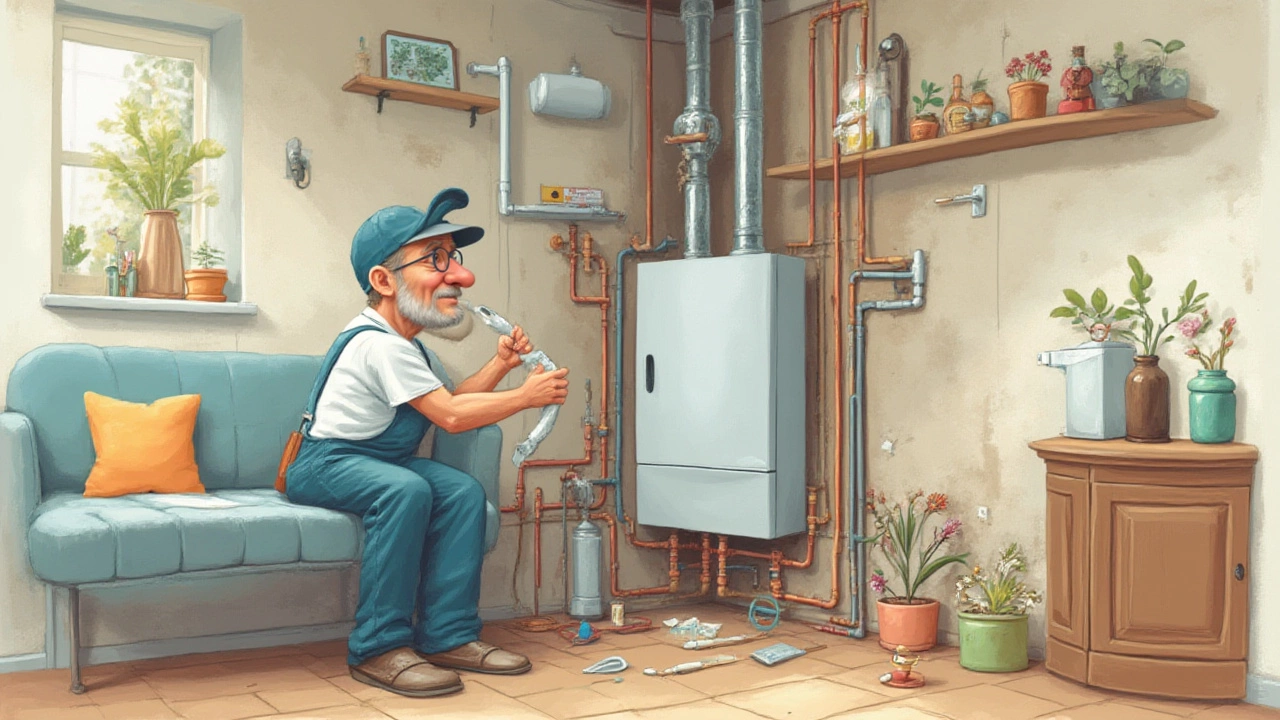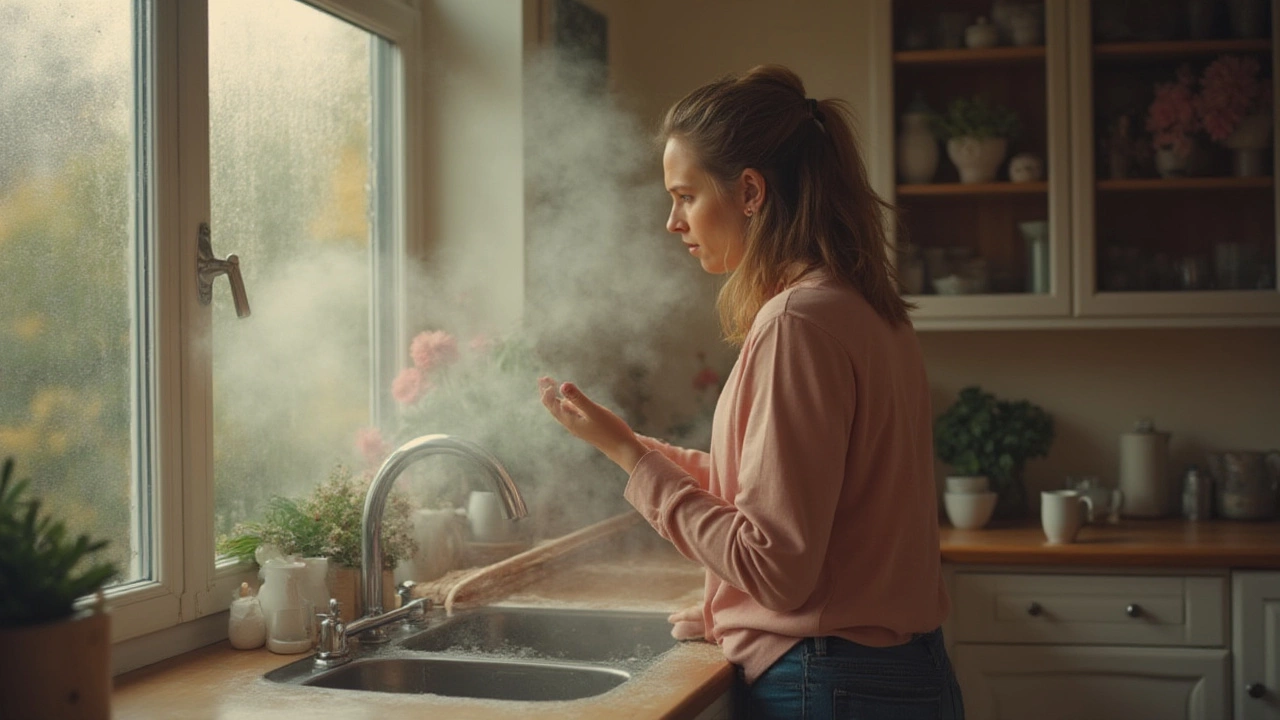One minute you’re basking in a glorious hot shower, and then—bam!—the water runs cold. It’s not just a minor inconvenience. It’s a rude shock, especially when you’re mid-shampoo on a freezing morning or have a line of impatient kids waiting their turn. I’ve wrestled with this problem (with Rowan and his never-ending baths), so I know how annoying it is. But here’s the kicker: cold water from your hot tap is way more common than people admit. This is the kind of thing that sneaks up at the worst time. So, why does hot water suddenly abandon you just when you need it most? Let’s pull back the curtain on the mystery of hot water woes and show you the quick wins—and serious fixes—you actually want.
What Causes Hot Water to Run Cold?
It feels personal when your steamy shower turns freezing, but there are only so many culprits. Let’s go through the big ones, starting with the obvious—your water heater itself. Did you know the typical water heater lasts about 8 to 12 years? Age plays a huge role. Sediment builds up inside, making it way less efficient. The heating element may struggle to keep up, or it could fail outright. So, if your water heater sounds like it’s brewing gravel, or if the last time anyone changed a filter was before TikTok existed, that’s a pretty good clue something’s up.
Here’s the second big reason: faulty thermostats. Water heaters often use two thermostats (upper and lower), and one can die before the other. If only one is working, you’ll get short bursts of hot water that turn frigid fast. A broken thermostat can make your water lukewarm at best. I’ve had a basic $15 replacement save an entire winter. Bad thermocouples and heating elements tie for third in most common issues. If your heater is gas, the thermocouple keeps the pilot light lit. If that fails, you get nada. If it’s electric, the heating elements act like big kettles. When they break, your water never gets truly hot, or you lose capacity fast.
Don’t ignore the signs of a leak. If you’re seeing growing puddles around your heater, you might have a crack or loose connections. Leaks not only waste water but can cause your heater’s tank to empty faster than it fills. Pressure relief valves, flexible hoses, and old fittings may drip or even gush over time. In older apartments or houses, corroded pipes sometimes cause blockages, so you’ll feel a reduction in both pressure and temperature.
Did someone mess with the settings? It happens more than you think—especially with kids or renters. Sometimes, the thermostat is set too low for safe hot water delivery (the safety minimum is 120°F or 49°C, but some people dial it down to save money, which is great for the bill but brutal during a Scottish winter).
Another sneaky culprit is the dip tube. The dip tube funnels incoming cold water to the bottom of your hot water tank so the hottest water rises to the top, where it leaves for your faucet. If this tube cracks or breaks off—which is likelier in units made from the mid-1990s—cold water mixes right at the top, and you get an arctic blast instead of a comforting pour.
Sometimes, it’s actually not your water heater’s fault. Do you have a mixer valve on your pipes? Some homes have anti-scald devices or mixing valves that blend in cold water for safety. If these go bad, you get nothing but lukewarm or cold water, even if your heater is working overtime.
Also, don’t forget external factors like power cuts or gas outages. If a fuse trips or there’s a disruption in your energy supply, your water heater sits idle until you reset things. It’s worth checking your circuit box or gas mains before panicking.

How to Fix Hot Water Running Cold – DIY Checks and Quick Fixes
Ready to roll up your sleeves? When your hot water turns cold, don’t just grit your teeth and finish your shower in turbo mode. There’s actually a lot you can check and fix yourself, without calling in the cavalry (or draining your wallet). Safety first—always switch off the power or gas supply before poking around your water heater, and give it a chance to cool. Hot components and scalding water are not your friends.
- Check the thermostat settings. Sometimes kids, housemates, or even cleaning crews nudge knobs without realizing. Verify it’s set between 120°F and 140°F — that keeps water hot and helps avoid any germs growing in the pipes.
- Flush your heater. Sediment is enemy number one for a lot of people. Find the drain valve at the bottom, attach a hose (unless you love cleaning up messes), and let it drain until the water runs clear. You’ll be surprised how much mush can slow things down inside a tank.
- Check if your circuit breaker tripped. Those little black switches in your panel box have a way of snapping off when overwhelmed. Flip them back if they’re halfway or off.
- Look for water leaks. If there’s any pooling around the base, inspect the tank, the valves, and the connections. Tighten anything loose, and swap out washers or hoses if needed.
- Test your hot water at multiple taps. If only one fixture gets cold water, your problem is probably closer to the tap (think failed cartridge, stuck mixing valve, or crud in the aerator), not the heater.
- For gas heaters, check the pilot light. That little blue flame under the tank should be steady. If it’s out, follow the relighting instructions glued to the heater’s panel (or look them up for your model). A standing pilot light that won’t stay lit usually means a dodgy thermocouple.
- Check the vacation mode. Some heaters have this for those long absences from home. It keeps water just warm enough to prevent freezing and bacteria but not for showers. Make sure you’re not accidently in that mode.
If after the basics there’s still no sign of improvement, it could be time to replace a thermostat or a heating element. Most electric water heaters have easy-access panels—just remember to double check for voltage even when you think it’s off (those little non-contact testers are cheap and life-saving).
The dip tube fix is a little trickier, but not impossible for a DIYer with patience. Shut off the water main and detach the cold water inlet to peek inside. If the tube is cracked or barely hanging on, a new one is usually under $20 at the hardware store.
Here’s a tip not enough people mention: if the breaker keeps tripping or fuses keep blowing, stop fixing and call for help. That points to deeper electrical problems you do not want to gamble with (especially if, like me, you still have curious kids around).
Wondering how to keep problems at bay? Commit to a quick annual inspection and flush. It’s worth setting a reminder in your phone each spring or fall. This prolongs tank life by years, and those fifteen minutes are easier to fit in than a full-blown emergency repair visit. Replace sacrificial anode rods every 3-5 years. They’re cheap and absorb minerals, saving your tank from rust.

When Professional Help Is a Must—and What to Expect
DIY is great until you’re out of clues or up against big repairs. If you’ve tried all the above and your hot water is still running cold, the problem probably needs a specialist. Here’s what that could mean for you.
Persistent leaks, major corrosion, a tank that makes popping or banging noises every time the burner fires—these all point to bigger trouble. Modern plumbers have diagnostic cameras, electrical testers, and new tech that make short work of even the sneakiest issues, but expect a charge for their expertise and time. On the plus side, they get to the root of the problem in hours, not days, and their work is covered by warranty most of the time.
Worst-case scenario? Your water heater might have simply reached the end of its life. According to the Department of Energy, heaters over 12 years old are candidates for replacement. If yours is a rusty relic, don’t wait for a catastrophic flood (which happened in my old basement) to buy the new one. Trust me, the mess is brutal and water damage claims can drag on for months. Water heater upgrades are actually much more energy-efficient now. Swapping out an old clunker for a high-efficiency electric or hybrid unit can shave dollars off your monthly bill. Some households even install tankless systems for endless hot water, though in areas with hard or mineral-rich water, those need regular descaling. Plumbers will usually ask about your household size, usage patterns, and old heater’s capacity to size the new one right. Undersized tanks never keep up with modern family life—trust me, as Rowan’s showers have gotten longer, I get it.
Watch out for scams or bad advice. Not every repair guy will focus on your real problem—some always suggest a replacement, even if a lower-cost part would do. If you’re quoted thousands for a simple fix, shop around. Ask local friends and check recent online reviews for trustworthy pros. Sometimes it pays to get a second opinion, especially on big-ticket jobs.
A cool fact a plumber once shared: A lot of so-called broken heaters are actually working fine—the thermostat wire has just worked loose, thermostats are out of calibration, or breakers are off. Always double-check every simple fix before you pay for new parts or labor. If you’re not getting clear answers from your hot water technician, push for photos or videos of what’s wrong. Transparency matters.
For consistent issues like lukewarm showers or a pattern of rapid hot water loss, ask your pro about high-demand solutions. Possible upgrades include recirculation pumps (so hot water is almost instantly available), or point-of-use heaters under distant sinks. This is super useful in bigger homes, or older places where pipes snake through cold crawl spaces.
Last tip: keep your owner’s manual handy (or download a copy). It gives you troubleshooting codes, proper settings, and a maintenance checklist. If you’re registering a new heater for the warranty, do it the day it’s installed, and keep photos of your invoices—future-you will thank you if anything breaks.
Getting to the root of why your hot water is running cold usually isn’t rocket science. With the right checks, a bit of patience, and knowing where your limits are, you can solve most problems or at least head off a much bigger headache. And when all else fails, never underestimate the power of a good plumber, especially when the water’s running cold and you’ve got family waiting in the wings.


